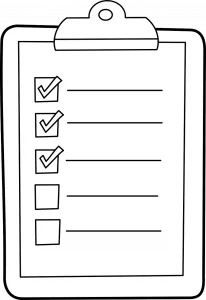The G-SAP-T Checklist Has Proven Results
Imagine this: Your friend asks you to go shooting. He’s really excited that you have guns and belong to the local range. You diligently review the four rules of firearm safety and show him how to load rounds into the magazine. Your last words before his first shots are, “Just pull the trigger slowly.
At 7 yards, you’re thinking there’s no way he can miss the target. You’ve taken oodles of classes and become a proficient shooter — you can help him. Then, BANG-BANG, a quick succession of two rounds zip out from the muzzle, and two puffs of dust dance up from the range floor: 5 feet left of the target, and 10 feet p ast it. Wowed, amazed, and giddy, your friend looks to you smiling, “That was awesome — where did I hit?”
ast it. Wowed, amazed, and giddy, your friend looks to you smiling, “That was awesome — where did I hit?”
You suddenly realize that getting him to hit the bullseye is going to be more of a chore than you anticipated. Just getting him to hit the paper might prove Sisyphean. If you’ve trained with any reputable pistol trainer, you’ll remember a simple “order of operation.”
1. Make sure they have a good and appropriate grip on the pistol.
2. They are in an “athletic” stance. Not too far forward, not leaning back.
3. The gun sights or optic are aligned properly.
4. The alignment has been appropriately placed onto the picture of the target.
5. They have moved the trigger to the rear of the gun without moving the rest of the gun.
Instructors across the country have various ways to instill this order of operations and describe each step in nuanced ways that they have found effective. But it’s always there. Grip, Stance, Alignment, Picture, Trigger.
We call it G-SAP-T. G-SAP-T is a wonderful checklist, even for the most seasoned shooters. If you are finding it hard to keep a good sight picture, go back to stance. Having trouble finding the dot on your PMO today? Confirm your grip. Search backward in G-SAP-T to ensure you’re not trying to solve a symptom instead of the problem. This process of analyzing your shooting is called “break down.”
Other sports use breakdowns to identify problems based on results or symptoms. A golfer will hit the driving range to break down his swing. Baseball players take batting practice to “find holes” in their swing. Tennis serves, foul shots, field goals, billiard rack breaks, all analyze their performance from first the grip and all the way through to the moment of truth.
So the next time your friend wants to go shooting, spend some time showing him and explaining grip, stance, alignment, picture and finally trigger activation. Teach him G-SAP-T. No bullseye will be safe! Happy shooting!
